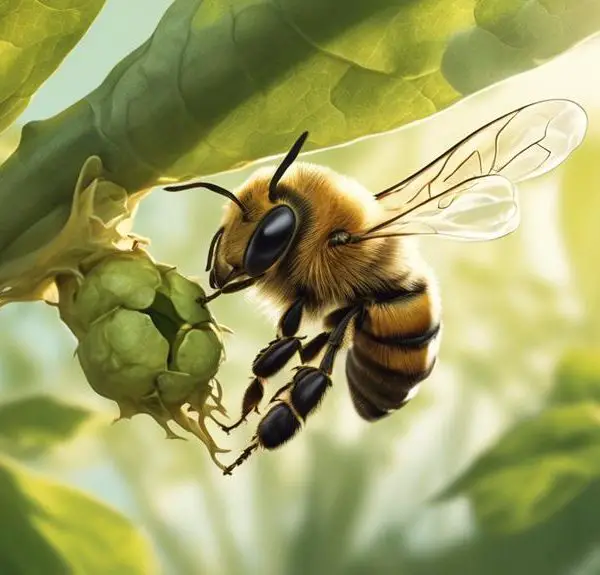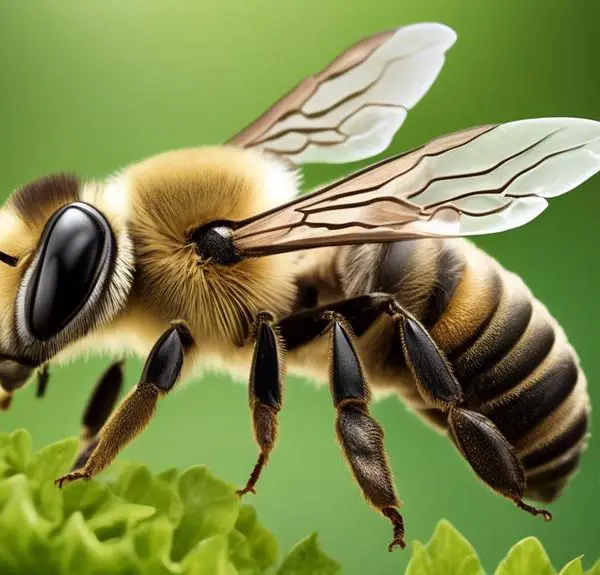Step into the intriguing world of leafcutter bees, as we unearth their unique life cycle and vital role in the UK's ecosystem.

Leafcutter Bee Life Cycle Uk
Did you know that there are over 250 species of leafcutter bees in the UK alone?
You might not have given these small, diligent creatures much thought, but understanding their life cycle is fascinating and crucial for appreciating the role they play in your local ecosystem.
From their unique egg-laying process to their industrious leaf cutting, the life of a leafcutter bee is filled with intriguing rituals and survival strategies.
Stick with us, as we unravel the fascinating details of their life cycle and why it matters to you.
Key Takeaways
- Leafcutter bees are solitary bees with a robust body covered in dense fur.
- The life cycle of leafcutter bees consists of four stages: egg, larva, pupa, and adult.
- Leafcutter bees are efficient pollinators, transporting pollen on their abdomens and aiding in plant reproduction.
- Threats to leafcutter bees include habitat loss, climate change, pesticide exposure, invasive species, and parasites/diseases.
Understanding the Leafcutter Bee

To fully appreciate the life cycle of the leafcutter bee, you'll first need to understand its unique physiological characteristics and behaviors.
This solitary bee species, scientifically known as Megachile, is a mason bee that's known for its distinctive leaf-cutting behavior. You'll notice that the leafcutter bee has a robust body covered in dense fur, with females possessing specialized structures on their abdomen for carrying leaf fragments.
Unlike social bees that live in colonies, leafcutter bees are loners. They're industrious pollinators, often more efficient than honeybees. You'll find them tirelessly working, transporting pollen on their abdomens, unlike other bees that carry on their hind legs. This characteristic contributes to their superior pollination skills as they move from flower to flower, inadvertently dusting them with pollen.
One of their most unique behaviors is their leaf-cutting ability. Females cut neat, circular pieces from leaves to construct brood cells within their nests. This is where they deposit a single egg, along with a mix of pollen and nectar as food for the emerging larva.
Understanding these characteristics and behaviors is crucial to appreciating their life cycle.
Life Cycle Stages Explained
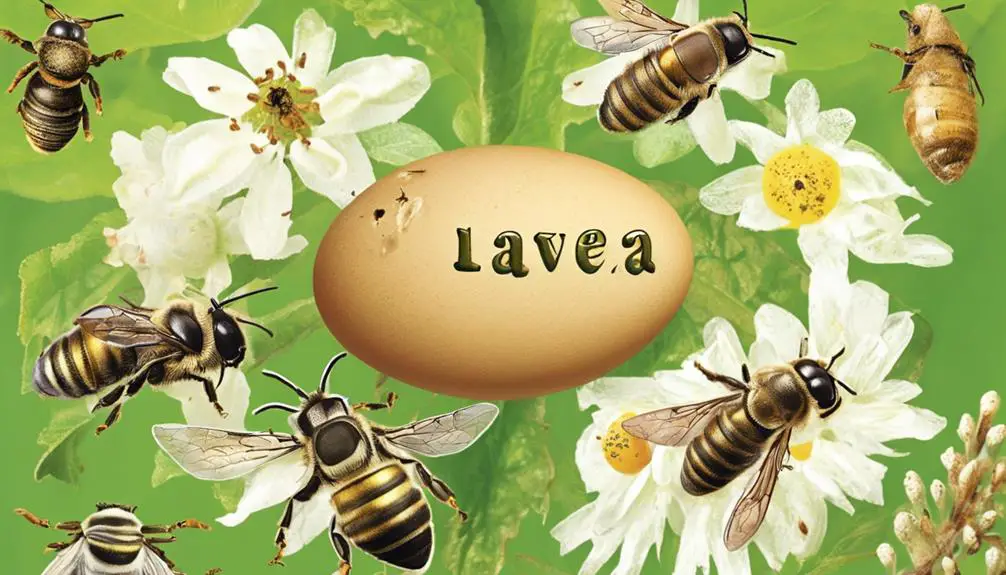
Now that you've got a grasp on the unique characteristics and behaviours of the leafcutter bee, let's dissect each stage of their life cycle for a deeper understanding.
The life cycle of a leafcutter bee is made up of four main stages: egg, larva, pupa, and adult. The cycle begins with a female bee laying her eggs in a leaf she's cut and shaped into a cell. She leaves a mixture of pollen and nectar with each egg for nourishment.
After about ten days, the eggs hatch into larvae. The larvae feed on the pollen and nectar mix, growing rapidly. Once they've fully grown, they spin a cocoon around themselves, entering the pupal stage. In this stage, they undergo metamorphosis, transforming into adult bees.
The final stage is the adult bee, where the males typically emerge first, followed by the females. The adult bees mate, and the females begin the cycle anew by cutting leaves and laying eggs.
This life cycle is crucial for the pollination of plants, making leafcutter bees an important part of the UK's ecosystem.
Significance in UK Ecosystem
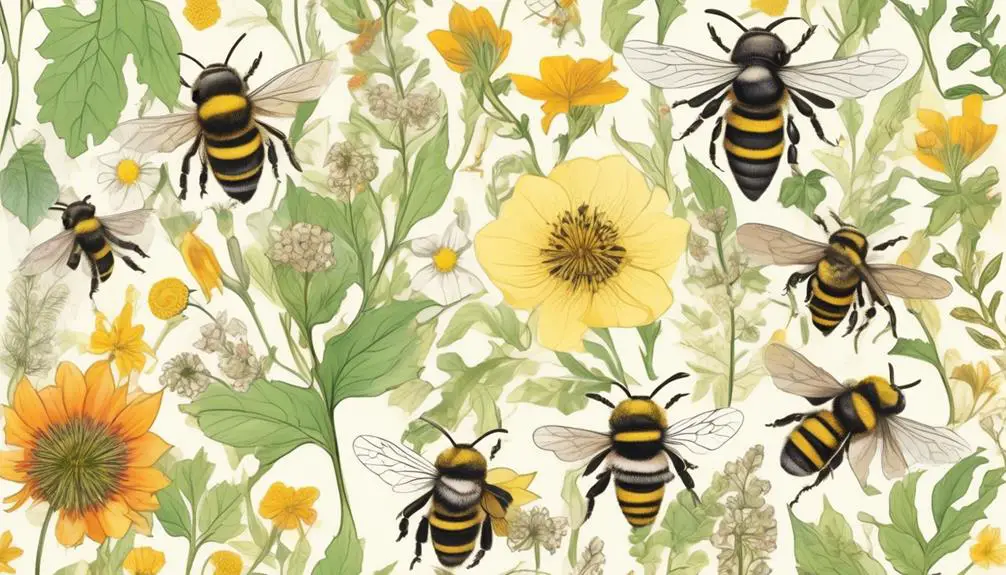
As you've learned about the leafcutter bee's life cycle, you might be wondering why these insects are so significant in the UK's ecosystem. Understanding the importance of these bees goes beyond their fascinating life cycle and delves into their role in our environment.
Leafcutter bees are crucial pollinators, aiding in the fertilization of plants by transferring pollen from the male anthers to the female stigma. This process is essential for plant reproduction, food production, and maintaining biodiversity. Unlike honey bees that carry pollen on their hind legs, leafcutters transport it on their abdomen, thus enhancing the pollen's contact with flowers.
In the UK, these solitary bees contribute significantly to the pollination of wildflowers and crops, such as fruits and vegetables. Their presence boosts agricultural productivity and sustains ecosystems by promoting plant growth and diversity. Moreover, they're not aggressive and less likely to sting, making them safe for human interaction.
However, leafcutter bees face threats from habitat loss, climate change, and pesticides. Your understanding and action can help conserve these vital insects, ensuring the health of the UK's ecosystems and food supply. Remember, every creature, even as small as a leafcutter bee, plays a crucial role in our world.
Threats to Leafcutter Bees
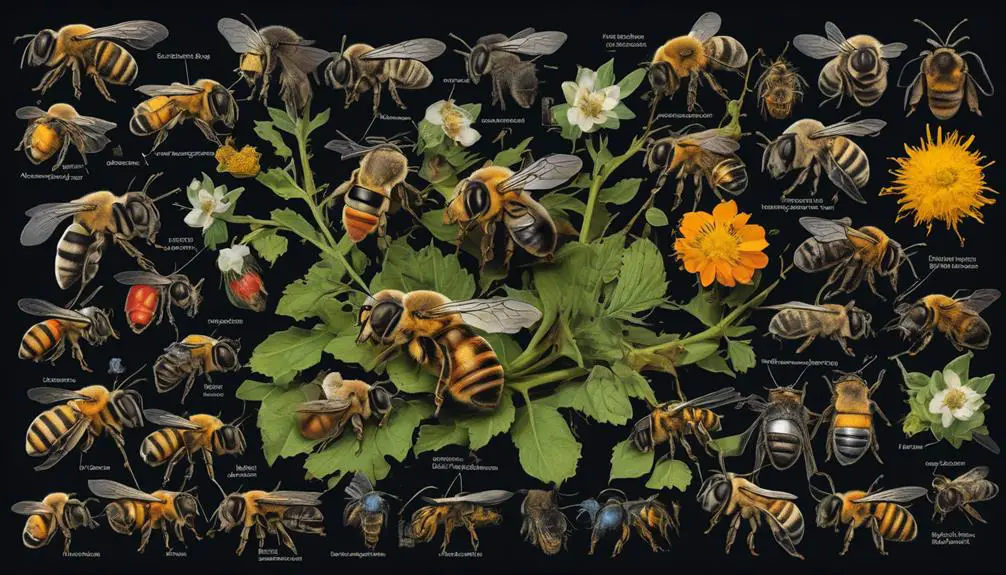
Despite their significant contributions to the UK's ecosystem, leafcutter bees are under threat from various sources, posing a risk to their survival and, ultimately, the health of our environment.
One of the main threats to these bees is habitat loss due to urbanisation or intensive farming practices. You see, they require diverse plant species and undisturbed ground for nesting, which are often unavailable in these environments.
Climate change, too, poses a significant risk. It alters flowering times, potentially leading to mismatches between bees and their food sources.
Pesticide exposure is another critical threat. Neonicotinoid insecticides, which are widely used in agriculture, are particularly harmful. They can impair the bees' foraging abilities and reduce their reproductive success.
Invasive species also pose a considerable threat to leafcutter bees. For instance, the Asian hornet, an invasive predator, preys on bees and can decimate local populations.
Finally, parasites and diseases, such as chalkbrood and mites, can weaken bee populations, reducing their resilience to other threats.
As you can see, leafcutter bees are facing a range of threats, each with the potential to drastically impact their populations and, by extension, the ecosystems they support.
Conservation Strategies in UK

Recognising these threats to leafcutter bees, conservation strategies in the UK have been developed to safeguard their populations and maintain the crucial role they play in our ecosystems.
The British Beekeepers Association, along with other conservation organisations, have initiated campaigns to raise awareness about the importance of these pollinators and the threats they face. They're advocating for more bee-friendly gardening, which includes planting bee-friendly flowers and avoiding the use of harmful pesticides.
Research is also ongoing to understand the effects of climate change on leafcutter bees and devise strategies to mitigate them. Researchers are monitoring bee populations and their behaviour to identify trends and possible solutions.
Moreover, the UK government has stepped in, implementing policies that promote the protection of these bees. This includes regulations on pesticide use and the introduction of incentives for farmers who incorporate bee-friendly practices in their farming methods.
These strategies aren't just about saving the bees. They're about maintaining the balance in our ecosystems and ensuring the sustainability of our food supply. The efforts put into their conservation now will determine the health of our ecosystems in the future.
Conclusion
So, you've learned about the leafcutter bee's life cycle. Understanding and respecting their biology can help us protect them. After all, they're not just part of our gardens, they're essential players in our environment.
Their vital role in the UK ecosystem is clear, and strategies are in place to aid their survival. Their conservation is crucial, and let's keep our buzz-worthy friends safe, shall we?
The threats they face highlight the importance of their conservation. It's clear that their survival is at stake, and taking action to protect them is necessary. Let's ensure that these incredible creatures continue to thrive in our environment.
Double new line.

